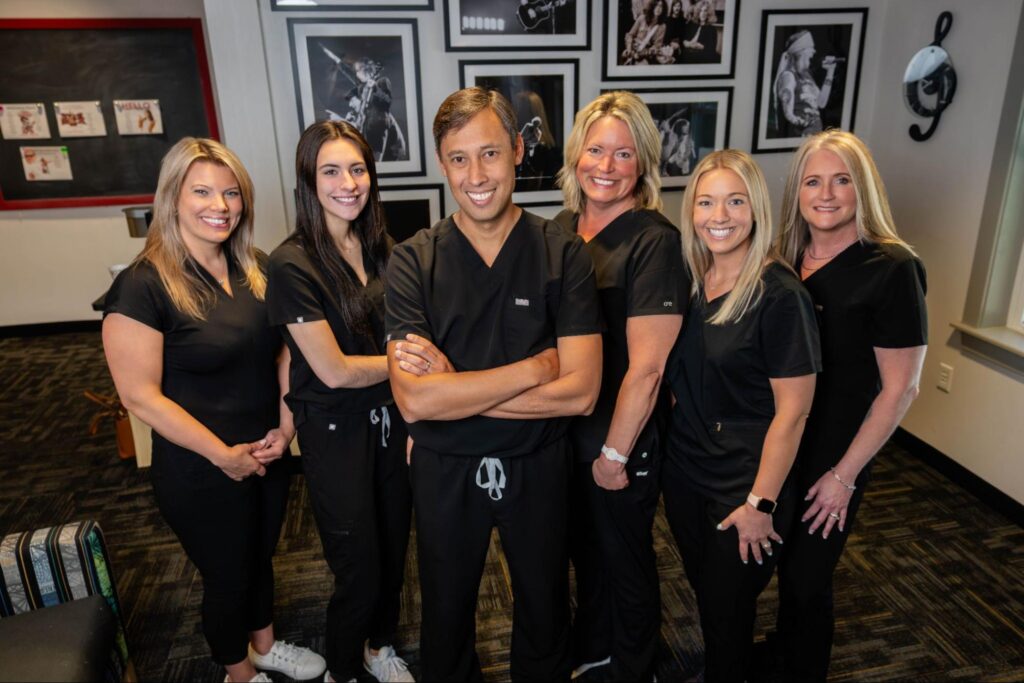Patients often aren’t sure about whether to choose between braces vs Invisalign. There are some misconceptions out there about both, and Sturbridge Orthodonticswants to provide some clarity. That way, you can choose the best option for your teeth and lifestyle!
A Tricky Choice
Dr. Sabelisalways works with patients on a one-on-one basis—meaning that whatever course of treatment he chooses with you will be based entirely on your individual needs. Let’s begin by breaking down the benefits and drawbacks of both options, which can depend on many different factors.
Braces: Tried and True
- The Good:
- Fixed Placement: If you’re bad at keeping up with things, the permanence of braces can come in handy compared to clear aligners.
- Effective for Complex Cases:Braces can manage a huge range of conditions, including correcting severe misalignment, bite issues, and rotated teeth.
- Customizable: Braces offer some degree of personalization—patients can choose their favorite band colors to make the experience more fun and unique. They can also opt for clear braces instead so that there’s as little color as possible.
- Durable:Traditional braces are designed to handle all types of orthodontic issues, which can be ideal for kids.
- The Bad
- Appearance: For some patients, the primary con of braces is that they’re quite visible, particularly adults or teens who are self-conscious about their orthodontic treatment.
- More Office Visits: Braces are manually adjusted by Dr. Sabelis, which warrants more frequent visits to the orthodontist for adjustments. This could be a consideration for those with packed schedules.
- Diet Restrictions: Wearing braces means you must stay away from certain foods, like popcorn, gum, and anything too sticky or crunchy. All of these can cause direct damage to your braces.
- Potential Discomfort:After adjustments, some degree of discomfort is normal. The same can be said for the very start of treatment, though it eventually subsides.

Invisalign: Modern and Masterful
- The Good:
- Aesthetics: Invisalign’s main appeal is often the appearance of them—clear plastic that closely hugs your teeth and is very difficult to discern from others. This is a positive point for teenagers and adults alike.
- Removable: Oral hygiene can be easier to manage due to clear aligners being removable. It also doesn’t inhibit your diet at all since you’ll remove them while eating.
- Comfort: People generally perceive Invisalign as being more comfortable, since they are only made of plastic and don’t have any additional parts.
- Fewer Office Visits: Invisalign typically requires fewer in-office appointments at Sturbridge Orthodontics, as your aligner trays are provided in advance and don’t require manual adjustment.
- The Bad
- Compliance Focused: Invisalign is removable, but this feature comes with a whole separate set of rules to follow. Aligners must be worn for at least 20-22 hours a day for effective results; you must clean them after every meal; forgetting to wear them can delay treatment progress, etc.
- Limited Effectiveness for Severe Cases: Complex, multi-layered orthodontic cases are usually not the best fit for Invisalign. It can easily handle mild to moderate misalignment, though.
- Possibility of Losing Aligners: The thing about these aligners is that they’re hard to see—which means they’re awfully easy to lose. You’ll need to keep them in their case at all times to keep up with them.
The Fact of the Matter
Now that you know the main qualities of both braces and Invisalign, we want to deconstruct a few rumors about them that you might have heard. Knowing the truth is a huge part of making an educated decision!
Myth 1: You Don’t Need a Retainer After Invisalign
- Reality:Oh, how we wish this were true. This misconception is likely connected to how similar clear aligners seem to retainers in some ways, especially clear plastic retainers. Regardless of your treatment type, retainers are necessary to keep teeth in their new positions long-term.
Myth 2: Invisalign Works Faster Than Braces
- Reality: There’s not a collective blueprint for treatment timelines. Treatment time depends on each person’s needs, not necessarily on the type of appliance they have. Some cases might see quicker results with Invisalign, while others may progress faster with braces. Some may even use a combination of both.
Myth 3: Braces Are Only for Kids
- Reality: This is a stigma, and it’s false. Braces are actually fantastic for all ages—that’s one of their benefits. Adults can choose braces for various reasons, especially when Invisalign isn’t ideal for their needs. In fact, adult braces are becoming more and more common these days.

The Best You Can Be
Our promise to you is that when you partner with Sturbridge Orthodontics, you will end up with the smile you’ve always longed for. It takes time, education, and heaps of hard work—but it’s always worth it. Our Sturbridge teamcan’t wait to welcome you in soon!

